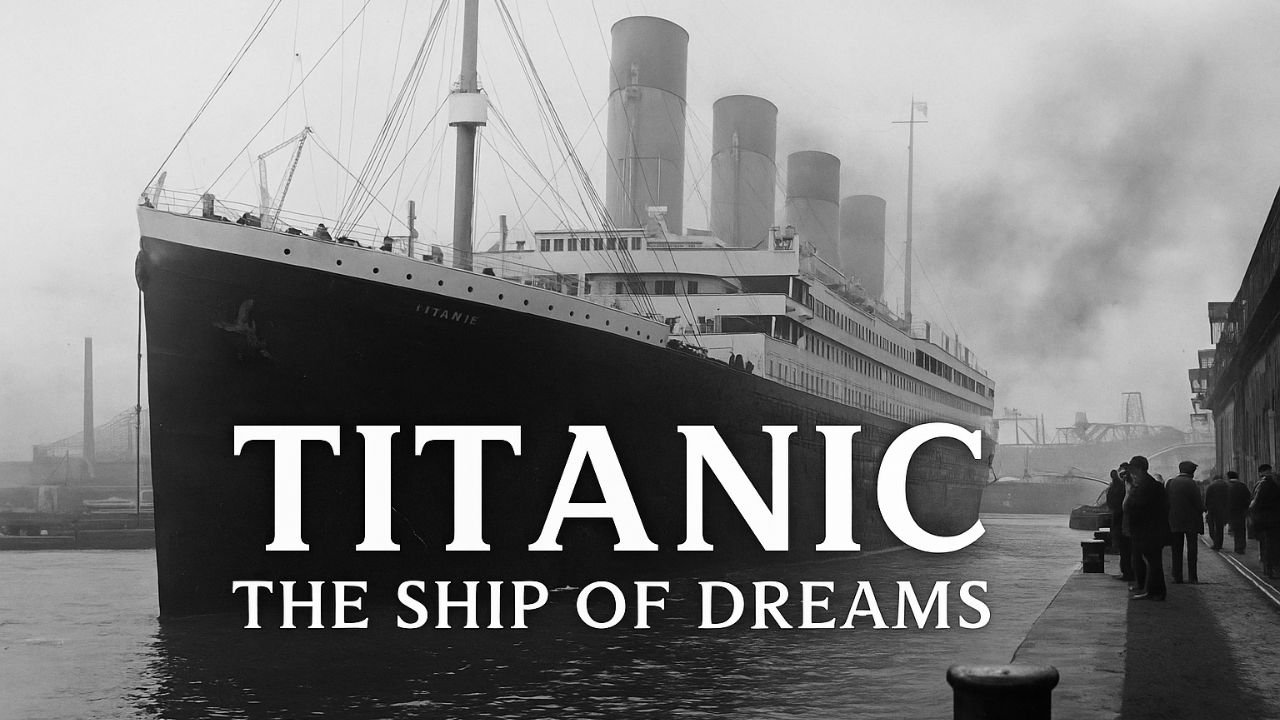Introduction: The Rise of a Maritime Marvel
In the early 20th century, no ship captured the imagination of the world quite like the RMS Titanic. Touted as the “unsinkable ship,” the Titanic represented the peak of human progress, combining cutting-edge technology with unmatched luxury and elegance.. Built by the White Star Line and launched in 1912, this magnificent vessel was more than just a means of transport—it was a floating palace that carried the hopes and dreams of over 2,200 passengers.
But what began as a grand voyage quickly turned into one of the deadliest maritime disasters in history. The Titanic’s tragic sinking shocked the world and led to crucial changes in sea safety and navigation.
Construction of a Dream: The Making of Titanic
The Titanic was constructed at the Harland and Wolff shipyard in Belfast, Ireland. At 882 feet in length and 175 feet in height, it was the biggest passenger ship ever built at that time. The ship featured luxurious first-class suites, Turkish baths, swimming pools, and elegant dining halls, while second and third-class accommodations were also considered advanced for the era.
Equipped with 16 watertight compartments and deemed “practically unsinkable,” the Titanic was a marvel of engineering. Its construction took over three years and involved more than 15,000 workers.
The Maiden Voyage: A Journey Filled with Hope
On April 10, 1912, the Titanic set sail from Southampton, England, bound for New York City. The passenger list was a mix of the world’s elite—businessmen, celebrities, and aristocrats—as well as immigrants seeking a new life in America.
The ship made brief stops in Cherbourg, France, and Queenstown (now Cobh), Ireland, before heading into the vast Atlantic. Everything appeared perfect—calm seas, luxury meals, and an atmosphere of celebration.
Disaster Strikes: The Iceberg Collision
On the night of April 14, 1912, at approximately 11:40 p.m., the Titanic struck an iceberg in the North Atlantic Ocean. Though the impact seemed minor at first, water began flooding five of the ship’s compartments—one more than the ship could handle.
By 2:20 a.m. on April 15, the Titanic broke in half and sank beneath the freezing waters, carrying over 1,500 people to their deaths. Only about 705 passengers survived, rescued by the RMS Carpathia.
Why the Titanic Sank: A Chain of Errors
Several factors contributed to the Titanic tragedy:
- Speed: The ship was traveling at near top speed, despite iceberg warnings.
- Insufficient lifeboats: Only 20 lifeboats were available—enough for about half of the passengers.
- Lack of emergency training: Many crew and passengers didn’t know evacuation procedures.
- Delayed response: The nearest ship, the Californian, didn’t respond in time due to communication failures.
These failures highlighted serious flaws in maritime safety regulations.
Stories of Loss and Survival
The Titanic wasn’t just a ship—it was a collection of human stories. First-class passenger John Jacob Astor IV, one of the richest men in the world, perished. So did Captain Edward Smith, who chose to go down with his ship.
But there were survivors too: Molly Brown, later known as “The Unsinkable Molly Brown,” helped row a lifeboat and supported other survivors. Stories of sacrifice, such as the band that played music until the very end, remain etched in history.
Aftermath and Global Impact
The disaster shocked the world and led to:
- International safety reforms such as the SOLAS (Safety of Life at Sea) treaty.
- Mandatory lifeboats for all passengers.
- 24-hour radio communication on ships.
The Titanic disaster reshaped global maritime laws and is now taught as a cautionary tale in engineering, ethics, and leadership.
Rediscovery: Titanic Wreck and Modern Exploration
In 1985, the Titanic’s wreck was discovered nearly 12,500 feet underwater by a team led by Robert Ballard. The finding sparked worldwide fascination and led to numerous expeditions.
Artifacts recovered from the wreck are now displayed in museums, and the site itself is protected under international law as a memorial to those who lost their lives.
Cultural Legacy: Titanic in Film and Media
The Titanic continues to captivate audiences through books, documentaries, and movies. Most famously, James Cameron’s 1997 film “Titanic” brought the story to life for a new generation and remains one of the highest-grossing films of all time.
The legacy of the Titanic endures as a symbol of ambition, human error, and the fragile line between confidence and tragedy.
Conclusion: Remembering the Titanic
More than a century later, the Titanic remains a powerful story of dreams and disaster. Its luxurious design, tragic end, and human drama ensure it will never be forgotten. The Titanic’s history serves as both a reminder of human ingenuity and a lesson in humility.
In the end, the Titanic teaches us that no matter how advanced we become, nature—and fate—still hold the final word.
Want more history that moved the world?
Visit our History section on Global Mirror Official
